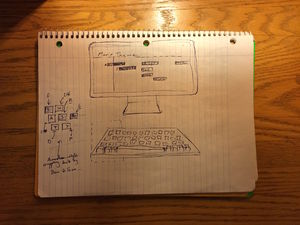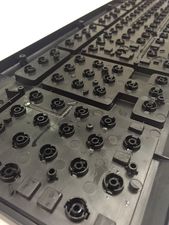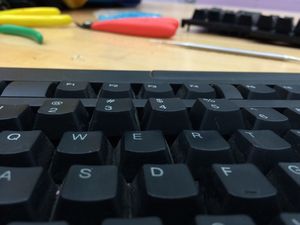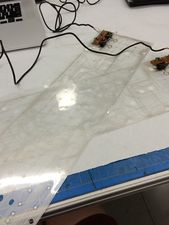Difference between revisions of "Velokeys"
(→Pictures!) |
(→Pictures!) |
||
| (One intermediate revision by the same user not shown) | |||
| Line 3: | Line 3: | ||
== Pictures! == | == Pictures! == | ||
| − | <gallery mode=packed widths= | + | <gallery mode=packed widths=200px heights=150px> |
File:Velokeys_diagram_2.jpg|Initial concept sketches | File:Velokeys_diagram_2.jpg|Initial concept sketches | ||
File:Velokeys_diagram_3.jpg|Initial concept sketches | File:Velokeys_diagram_3.jpg|Initial concept sketches | ||
| Line 13: | Line 13: | ||
File:Springs_test.jpg|Testing springs of different lengths. Here's a video: http://youtu.be/_dQA3hZ6M80 | File:Springs_test.jpg|Testing springs of different lengths. Here's a video: http://youtu.be/_dQA3hZ6M80 | ||
File:Sensors_on_sensors.jpg|I placed one sensor matrix on top of another to verify that the sensing technique will work. Here's a video: http://youtu.be/Y9ymcLa4O9I | File:Sensors_on_sensors.jpg|I placed one sensor matrix on top of another to verify that the sensing technique will work. Here's a video: http://youtu.be/Y9ymcLa4O9I | ||
| + | File:Sound_design.jpg|Here's a quick sheet outlining the kinds of sounds this thing will make. I'm not sure if incomplete keypresses will be an issue, but in the case that they are, the BONK noise should be a a nice workaround. | ||
</gallery> | </gallery> | ||
Latest revision as of 11:38, 17 November 2014
Velokeys is a project to make a velocity-sensitive qwerty keyboard.
Pictures!
Testing springs of different lengths. Here's a video: http://youtu.be/_dQA3hZ6M80
I placed one sensor matrix on top of another to verify that the sensing technique will work. Here's a video: http://youtu.be/Y9ymcLa4O9I
Similar work
- https://ccrma.stanford.edu/wiki/Laptop-Based_Step_Sequencer
- https://ccrma.stanford.edu/wiki/Daniel_Smith_Final_Project_Music_220a_Fall_2008
- http://wiki.lvl1.org/Isomorphic_Keyboard
- http://benzguo.com/bayan/
- http://www.c-thru-music.com/cgi/?page=prod_axis-49
- http://www.davecooper.org/blog/2014/10/15/i-built-a-keyboard/
- http://deskthority.net/workshop-f7/brownfox-step-by-step-t6050.html
Minimum viable product
Requirements for MVP
- Velocity sensitive keys on at least whole alphabet and # key's
- Working MIDI mapping driver (OR MIDI over USB from Arduino)
Nice-to-haves
- Custom enclosure
- More expressivity controls
- Lighting
Given unlimited time... (and therefore money)
- Pressure sensitivity
- Lighting on each key
- NKRO (no keyboard ghosting, each key can be pressed individually)
Materials
The materials used can really vary based on the things I can get my hands on, but the two things that remain fairly constant are the switches used. I'm basing the velocity sensitivity off of this diagram from the isomorphic keyboard project listed above.
- Mechanical keyboard switches (from http://www.gonskeyboardworks.com/switches/46-cherry-mx-switches-63-2-pcs.html)
- Tactile switches (from http://www.digikey.com/product-search/en/switches/tactile-switches/1114206)
If I can find an adequate midi controller from a velocity-sensitive midi keyboard, I would love to use that for the "brains." Otherwise, I will need to use an Arduino with a couple multiplexers to open up enough inputs for all 41+ keys (with two switches per key). That will be pretty daunting.
If I can find an inexpensive mechanical keyboard, then I can save quite a bit of money on switches and an enclosure and all the other materials. I plan on heading to the electronics surplus store soon to try to dig up a keyboard or two.
Plans
- Gather materials
- Prototype with available materials
- Build CAD schematics
- Build structural components
- Solder electronics
- Write software driver
- Success









